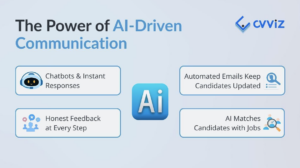Despite offering critical services, healthcare centers worldwide remain understaffed due to a well-documented shortage of physicians. A study by the University of Washington’s School of Medicine revealed that as many as 132 countries suffer from physician shortages. In fact, an estimated 6.4 million physicians are needed so that hospitals and other healthcare centers can bridge the gaps in healthcare systems and fulfill the goals of universal health coverage. But since this may take years to achieve, the current physician workforce suffers from high workloads.
Heavy workloads may further harm the physician workforce, and healthcare providers and organizations must utilize technologies to ease the shortage.
In this article, we’ll enumerate a few strategies that can mitigate the physician shortage.

Improved Recruitment of Remote Physicians
There are more than 130 countries suffering from physician shortages, so hospitals and other healthcare centers face tough competition when it comes to the recruitment of healthcare professionals. To address this problem, organizations can leverage AI to find the best physicians for their workforce.
Since time is precious in healthcare settings, organizations can leverage artificial intelligence in the recruitment process to assess the best candidates for remote or even in-person physician openings. This technology collects and displays crucial information about each candidate, making it easier for recruiters to assess the best physicians for the position.
Scraping software can even search through job sites, resume boards, and other applications so that organizations can connect with the right physicians for the role.
Greater accessibility through telehealth
Most physicians are employed in hospitals and health centers where they have to sacrifice their personal time to endure long shifts. But thanks to the development of virtual care platforms, physicians can choose to expand their private practice online.
These virtual care services aren’t only easier for patients, but they can also benefit providers themselves. To improve their working conditions, physicians can start a virtual care practice by undergoing a simple credentialing and onboarding process on telehealth platforms. These virtual care opportunities allow physicians to address diverse conditions and treatment areas while working on a more flexible schedule. Through this setup, physicians can reduce their risk for burnout and have more time for rest.
Insightful analytics for better workforce management
Time is precious, especially when it comes to medical cases. Unfortunately, it can be difficult for a limited physician workforce to attend to numerous patients without compromising their own health and well-being.
Recognizing this dilemma, Dr. Amy Ho recommends building a physician-led data analytics team so that the workforce can figure out how to efficiently attend to numerous patients. By collecting and analyzing data about the physician workforce, physicians can find insights into their workflows and clinical processes. As a result, remote and even in-clinic physicians can maximize the number of patients that they can address within a specific time frame.
Advanced technologies that can reduce workload
Apart from attending to patients, physicians also have to fulfill paperwork and other administrative tasks. Unfortunately, this can be a burden, as it can limit their time for critical tasks and draw out their work shifts.
Medscape’s annual survey revealed that the chief contributor to clinical burnout is bureaucratic work, like charting and paperwork. So rather than increasing the workload of the current workforce, organizations can navigate the talent shortage by investing in automation tools for administrative tasks. These automation tools can handle repetitive manual tasks and processes, allowing providers to manage their workload more sustainably.
Conclusion
Unless healthcare organizations and providers implement structural changes, the physician shortage may continue for many years. Fortunately, through the help of advanced technologies, the current physician workforce is better equipped to provide care without compromising their own health and well-being.



